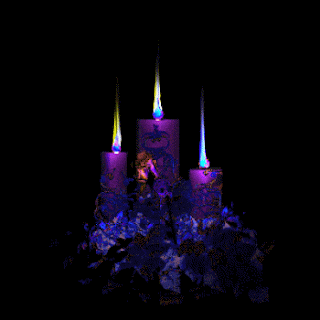பெளதீகவியலில் நோபல் பரிசில் வென்றவர்களும் அதன் விபரமும் (1980--2003)...ஆங்கிலத்தில்...!
-----------------------------------------------------------------------
Three scientists who worked separately to explain the nature of matter at extremely low temperatures won the 2003 Nobel Prize for Physics on October 7, 2003. Vitaly Ginzburg (L), University of Illinois professor Anthony J. Leggatt (C) and Alexi Abrikosov (R) were recognized by The Royal Swedish Academy of Sciences for the trio's theories on both superconductivity and superfluidity, two phenomena of quantum physics.
( REUTERS)
-----------------------------------------------------------------------
2003: Alexei A. Abrikosov and Anthony J. Leggett of the United States, and Vitaly L. Ginzburg of Russia for their work concerning two phenomena called superconductivity and superfluidity.
2002: Raymond Davis, Jr., United States, and Masatoshi Koshiba, Japan, for their research into cosmic neutrinos; and Riccardo Giacconi, United States, for pioneering contributions to astrophysics that led to the discovery of cosmic X-ray sources.
2001: Eric A. Cornell and Carl E. Wieman, United States, and U.S.-based researcher Wolfgang Ketterle of Germany for creating a new state of matter, an ultra-cold gas known as Bose-Einstein condensate.
2000: Zhores I. Alferov, Russia, U.S.-based researcher Herbert Kroemer of Germany and American Jack Kilby for work that helped create modern information technology.
1999: Gerardus 't Hooft and Martinus J.G. Veltman, Netherlands, for their theoretical work on the structure and motion of subatomic particles.
1998: Robert B. Laughlin, United States, Horst L. Stoermer, Germany, and Daniel C. Tsui, United States, for discovering a new form of quantum fluid that gives more profound insights into the general inner structure and dynamics of matter.
1997: Steven Chu and William D. Phillips of the United States and Claude Cohen-Tannoudji of France, for their work in cooling and trapping atoms with laser light.
1996: David M. Lee, Douglas D. Osheroff and Robert C. Richardson, United States, for their discovery of superfluidity in helium-3.
1995: Martin L. Perl and Frederick Reines, United States, for pioneering experimental contributions to lepton physics.
1994: Bertram N. Brockhouse, Canada, and Clifford G. Shull, United States, for developing methods of neutron scattering techniques for studies of condensed matter.
1993: Russell A. Hulse and Joseph H. Taylor, Jr., United States, for finding a twin star: a binary pulsar that helped prove Einstein's theory of relativity.
1992: Georges Charpak, France, for developing particle detectors and the multiwire proportional chamber.
1991: Pierres-Gilles de Gennes, France, for developing systems for analyzing complex matter such as liquid crystals and polymers.
1990: Jerome I. Friedman and Henry W. Kendall, United States, and Richard E. Taylor, Canada, for investigating the scattering of electrons and refining models of quarks.
1989: Norman F. Ramsey and Hans G. Dehmelt, United States, and Wolfgang Paul, West Germany, for inventing methods used in atomic clocks and ion trap techniques.
1988: Leon M. Lederman, Melvin Schwartz and Jack Steinberger, United States, for developing the neutrino beam and discovering new types of neutrinos.
1987: J. Georg Bednorz, West Germany, K. Alexander Muller, Switzerland, for work revealing superconductivity in ceramics.
1986: Ernst Ruska and Gerd Binnig, West Germany, and Heinrich Rohrer, Switzerland, for designing the electron and scanning tunneling microscopes.
1985: Klaus von Klitzing, West Germany, for discovering the quantized Hall effect.
1984: Carlo Rubbia, Italy, and Simon van der Meer, Netherlands, for contributions to discovery of field particles involved in weak interaction.
1983: Subramanyan Chandrasekhar and William A. Fowler, United States, for theories explaining the chemical and physical process between stars and the universe.
1982: Kenneth G. Wilson, United States, for developing the theory of phase transitions.
1981: Nicolaas Bloembergen and Arthur L. Schawlow, United States, and Kai M. Siegbahn, Sweden, for contributing to development of laser and electron spectroscopy.
1980: James Cronin, Val Fitch, United States, for discovering new aspects of neutral K-mesons.











0 மறுமொழிகள்: